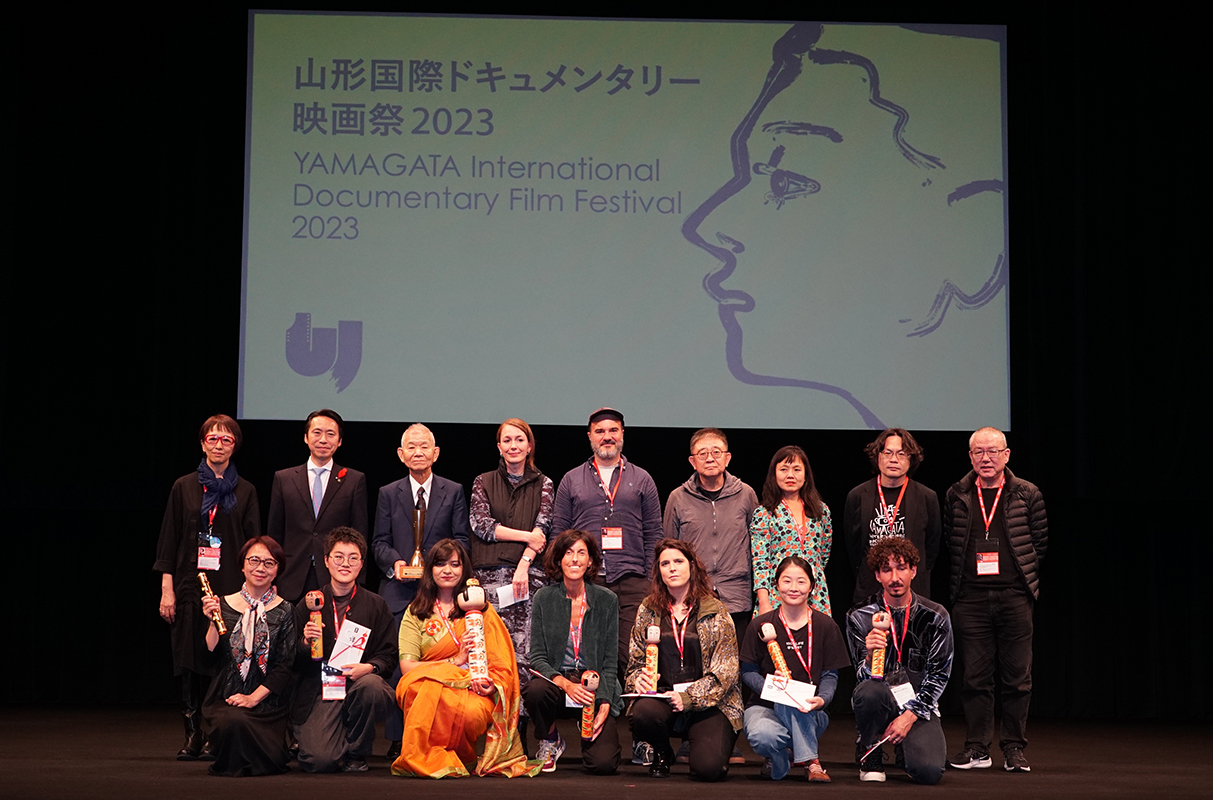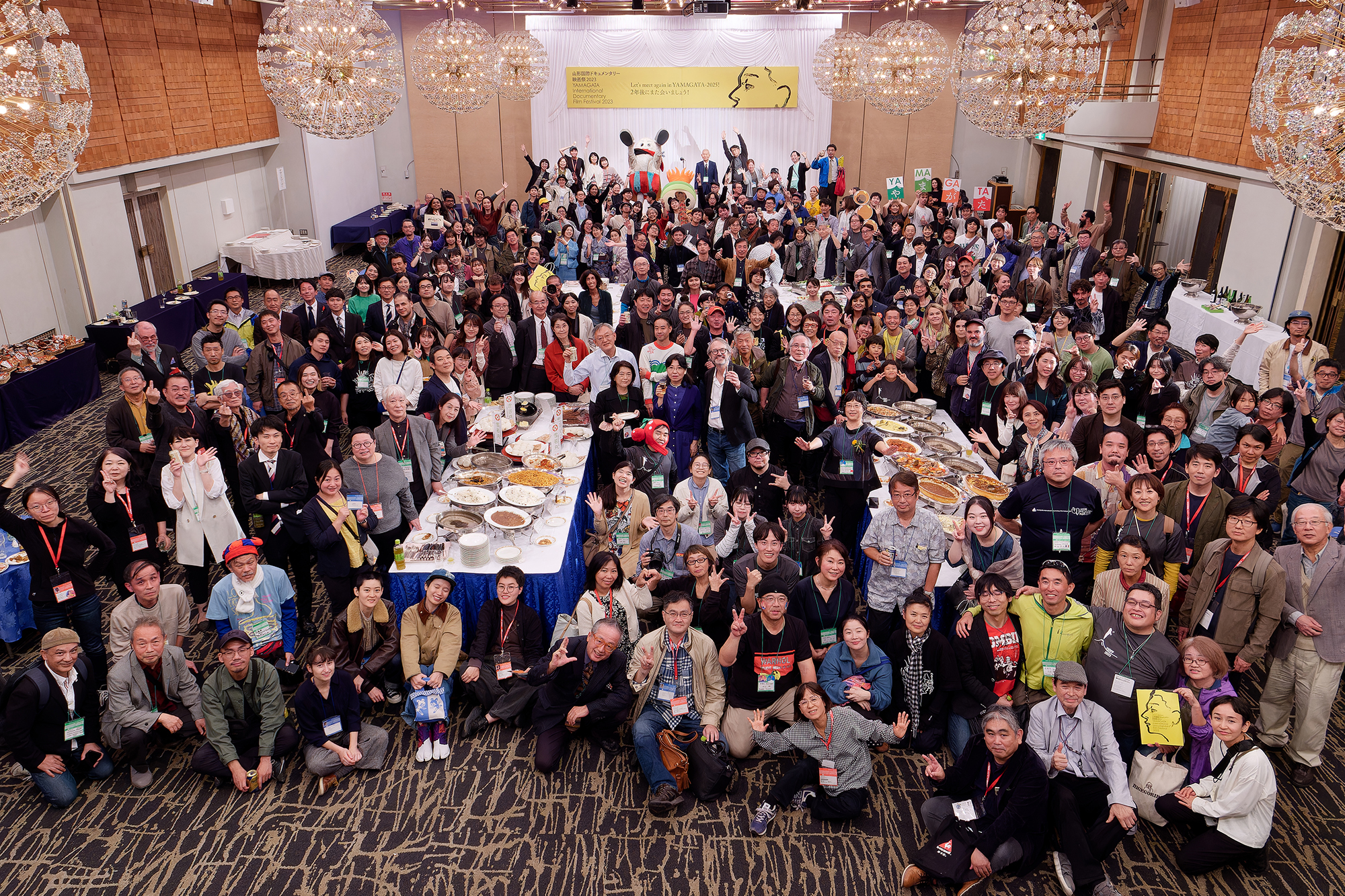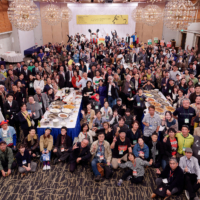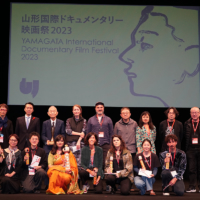The biennial Yamagata International Documentary Film Festival (YIDFF), one of Asia’s largest documentary film festivals, will be held in the city of Yamagata from Oct. 9 to 16.
A variety of programs, including two kinds of film competitions, will take place at various venues throughout the city, including Yamagata Central Public Hall, Yamagata Citizens’ Hall, the Forum Yamagata movie theater, Yamagata Creative City Center Q1 and the former Yoshiike Clinic.
The capital of Yamagata Prefecture, reachable in three hours from Tokyo Station by shinkansen, becomes full of movie professionals and fans from all over the world during the week.
Yamagata is a place where film culture has long been deeply rooted. Forum Yamagata, established in 1984, was Japan’s first citizen-funding movie theater.
In 1989, the city sought the advice of film director Shinsuke Ogawa when planning an event commemorating its centennial. At the time, he was based in the adjacent city of Kaminoyama, where he was producing documentaries. He proposed holding a film festival focused on documentaries, which at the time had very few opportunities for theater screenings in Japan. In response to his call, local young people volunteered to help run the festival, contributing greatly to its success.
This spirit is still carried on today, with about 250 volunteers — primarily from the city of Yamagata but also from both inside and outside the prefecture — coming together to support the festival.
More than 22,000 people from around the world visit the YIDFF on average. During the festival, especially on the weekend of Oct. 11 and 12, which will be followed by a national holiday, local accommodations are likely to fill up early, so it is recommended to stay in a nearby city with good access and visit the festival during the day. For example, it takes only an hour to get from Sendai in Miyagi Prefecture to Yamagata by bus. On weekends and holidays, over 15 buses run from Sendai to Yamagata Station in the morning alone, with return service available until around 9:30 p.m.
One of the festival’s competitions is the International Competition, which this year received 1,318 entries from 129 countries. Of these, 15 will be screened and judged during the festival, with five winners selected.
One of the 15 films is “Time to the Target” by the Ukrainian film director Vitaly Mansky. His hometown is Lviv, a city that, despite its distance from the front lines, has been repeatedly attacked by Russia. The film documents the town over a period of a year and a half.

The other competition is New Asian Currents, which received a record-high 1,358 submissions from 75 countries. Of these, 20 films will be screened and judged during the festival, and three will receive awards. Two of the 20 films were created by female directors from Afghanistan. Zainab Entezar directed “Shot the Voice of Freedom,” and Najiba Noori and Rasul Noori directed “Writing Hawa.” Both films depict the suffering of women under the revived Taliban rule.
Special programs include Unscripted: The Art of Direct Cinema, which explores the experimental documentary production methods that originated in the U.S. in the 1960s, and Palestine — Memory of the Land, which focuses on the tragic history of Palestine and the continuing hardships in the region.
Yamagata and Film contains records from the inaugural film festival. While some of these were published in the 1991 documentary “A Movie Capital,” this new collection brings together and digitizes parts that have never been before made public. View People View Cities — The World of UNESCO Creative Cities 2025 features seven films from cities from around the world, including Kathmandu in Nepal and Lodz in Poland, that have been members of the UNESCO Creative Cities Network, which Yamagata has also been part of since 2017. There will also be screenings of four new works from the Yamagata Renaissance Project, focusing on the city’s people, history and culture.
The YIDFF secretariat commented, “We aim to continue serving as a film festival that highlights small, often overlooked voices, bringing diverse range of documentary films from around the world to audiences and providing people with fresh encounters with both films and other people.”





